
Station Name: NORWICH CITY[Source: Glen Kilday]
Norwich City Station Gallery 4: 1949 - Late 1950s 
From this 1949 aerial view of Norwich City looking roughly eastwards we can see in some detail the eclectic mix of passenger carriages in use on former M&GN lines at the time. The entrance to the goods yard is seen bottom left with the weighbridge and weigh office. Opposite the weighbridge is the stables block.
Click here for a larger version Copyright photo from Britain From Above, reproduced with permission
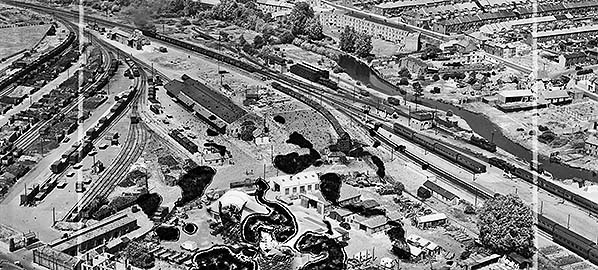
An informative but unfortunately damaged 1949 print of an aerial view of Norwich City looking roughly northwards. The 1931 60-foot turntable is in clear view. A loaded coal (?) train was being shunted, presumably to wait for space in the extensive coal traders’ sidings on the left of the image. The close proximity of the railway infrastructure to the prone-to-flood River Wensum is clear to see.
Click here for larger view. Copyright photo from Britain From Above, reproduced with permission 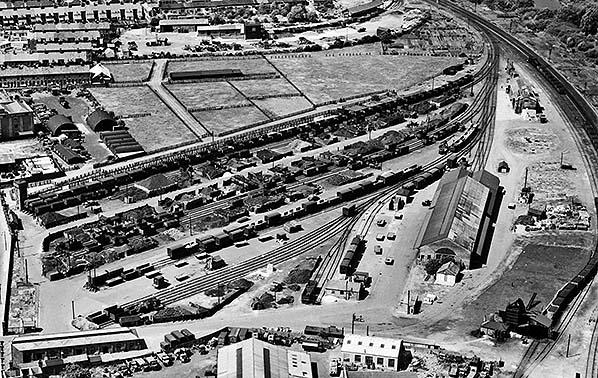
The coal merchants’ sidings can be seen clearly in this 1949 aerial image of Norwich City looking towards the north-west. At the time paddocks remained beyond the sidings. The Norwich Corporation roadstone sidings can be seen at the top of the image. The stable block is seen bottom left with the goods shed on the right. The furthest sidings served the coal yard; a water tower is seen at the end of the coal yard. The large building beyond the sidings on the left is Pickford's warehouse. Cattle pens are seen alongside the westernmost siding.
Click here for larger view. Copyright photo from Britain From Above, reproduced with permission 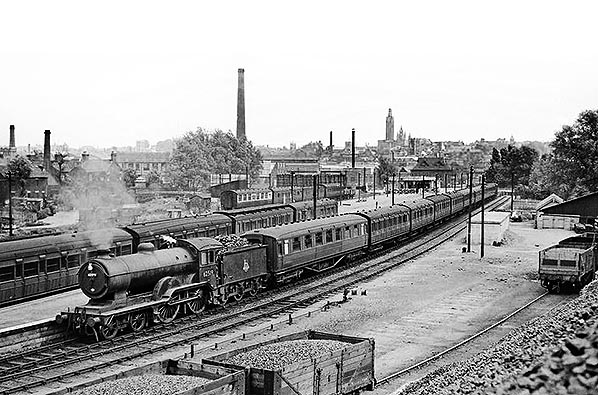 A busy scene at Norwich City which belies the fact the station was the terminus of what was in effect a single track branch line. The early BR logo on the locomotive tender and the coaching stock liveries tell us this view dates from early BR days. The ex LNER carriage in the background wears the early carmine and cream livery while the Gresley bow-ender coupled behind the locomotive appears to still be wearing varnished teak livery. The terminus can be seen in the right background, in the patched-up form it took following wartime bomb damage. At bottom left one siding has been lifted, probably that which at one time served Orchard Sawmills. The locomotive, an ex-GER 4-4-0 and number unreadable, carries the headcode for a stopping service. It also carries a shedplate on its smokebox door, informing us the photograph is no earlier than 1950. Shedplates were introduced across BR early that year, perpetuating earlier LMS practice. At this time, Melton Constable shed had a number of D15 and D16 class locomotives on its books as did South Lynn. The train might be judged as rather lengthy for a local service to Melton Constable so this train may be for King's Lynn. A timetable check shows there was such a service during this period, along with a few which for some mysterious reason continued to Weybourne having arrived at Melton Constable from Norwich. In the background, right of centre, can be seen the clock tower of Norwich City Hall and to its right the tower of Saint Peter Mancroft church. The presence of these structures serves well to illustrate just how poorly sited City station was for the centre of Norwich.
Copyright photo by C H A Townley 
Taken in 1952 at Norwich City, a class 1 train was caught departing the western platform hauled by an ex-Great Eastern D16 4-4-0 62620, a Melton Constable engine when it was withdrawn in October 1955. It was built at Stratford in 1923. LNER locomotives were drafted in after that railway assumed operational control of the joint railway in 1937.
Photo
from CF Rudkin collection
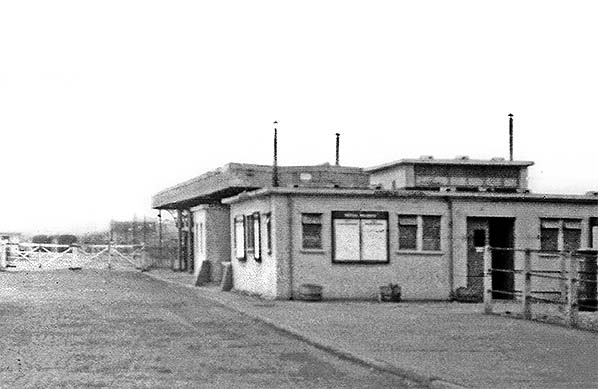
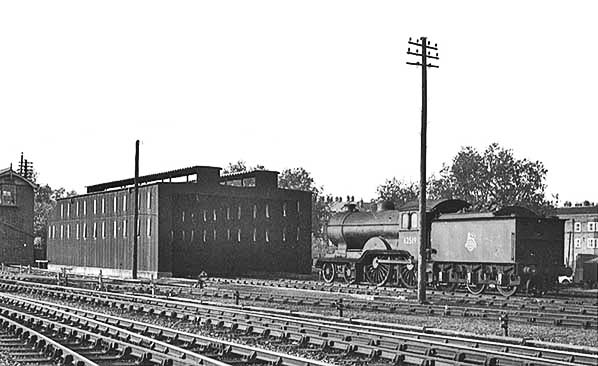
The second locomotive shed at Norwich City as it was on 25 May 1956. It replaced the bomb-destroyed original in 1944, providing two roads instead of three. It was built of steel uprights supporting corrugated iron sheets. D16 4-4-0 62569 from King’s Lynn shed was between turns. A 1907 engine from Stratford Works it lasted until 1957.
Photo copyright JPG / Roger Griffiths collection  In June 1956 a train made up of ex-LMS coaches, painted in BR maroon and cream livery, had arrived at Norwich City. The locomotive was in the headshunt. The coaches suggest that this train was the through carriages from Midlands cities. In the west platform passengers were boarding a train made up of ex-LNER corridor coaches.
Photo from John Mann collection 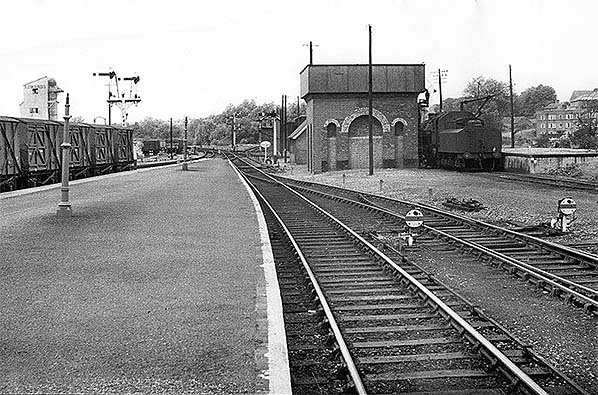
A view along the east side platform at Norwich City in 1957. An Ivatt Class 4 2-6-0 was standing by the water tower, another feature that was rebuilt following war damage in 1942. Locomotives of this class were allocated in number to East Anglian sheds in the early 1950s - ironically an ex-LMS type replacing LNER locomotives that had previously replaced LMS types in the 1930s! Melton Constable shed was
sent 11 new Class 4s, 43146-56, all built by BR at Doncaster Works. Photo from John Mann collection 
A view of Norwich City’s post-war engine shed in 1958. It was by then a sub-shed of Melton Constable (32G) - both sheds closed in 1959. A Hunslet diesel shunter was in the shed when this
photo was taken. Photo from Jim Lake collection  Sometime between 1955 and 1959 a Metro-Cammell DMU from the early 79xxx series stands at Norwich City after arrival from, presumably, Melton Constable. Judging by the number of open doors, this train had arrived with a fair complement of passengers. The DMU is in its original livery and the Driving Motor, facing the camera, carries the early BR 'Ferret & Dartboard' logo on its bodyside. In a few cases, whether by accident or design, this logo was also applied to Driving Trailers. It was eventually replaced by the coaching stock roundel, on motor coaches only. On the platform the portable barriers which seemingly haunt every photograph of the station taken post-war can be seen, along with the remaining short section of canopy beneath which were some of the temporary buildings, a legacy of the wartime damage, which remained in use until closure to passengers and indeed were to mostly survive total closure in 1969. Sometime between 1955 and 1959 a Metro-Cammell DMU from the early 79xxx series stands at Norwich City after arrival from, presumably, Melton Constable. Judging by the number of open doors, this train had arrived with a fair complement of passengers. The DMU is in its original livery and the Driving Motor, facing the camera, carries the early BR 'Ferret & Dartboard' logo on its bodyside. In a few cases, whether by accident or design, this logo was also applied to Driving Trailers. It was eventually replaced by the coaching stock roundel, on motor coaches only. On the platform the portable barriers which seemingly haunt every photograph of the station taken post-war can be seen, along with the remaining short section of canopy beneath which were some of the temporary buildings, a legacy of the wartime damage, which remained in use until closure to passengers and indeed were to mostly survive total closure in 1969.Photo from John Mann collection
Click here for Norwich City Station Gallery 5:
|

 Home Page
Home Page